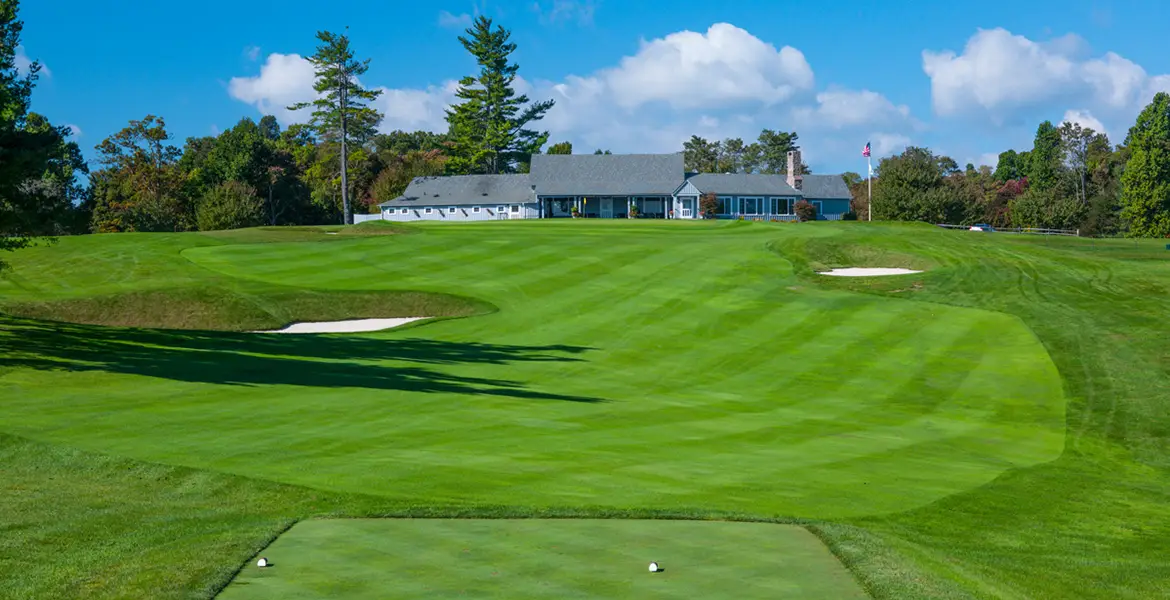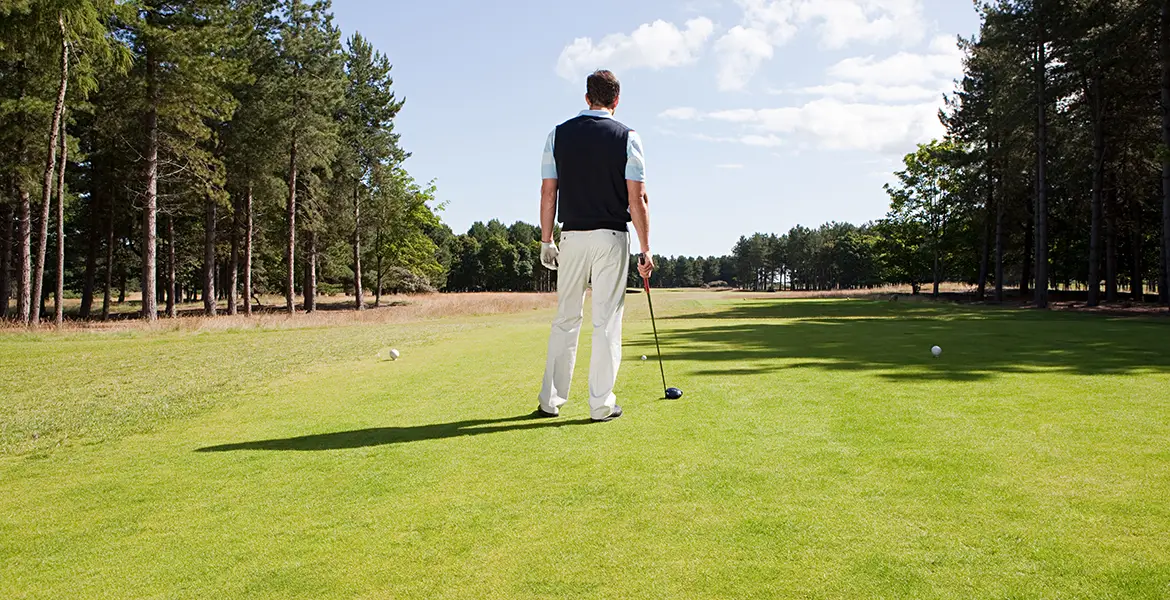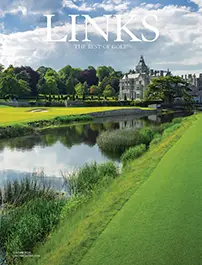There is a sacred stretch of days each year when golf fans park themselves on the sofa and are seduced once again by the azaleas, cathedral pines, and lightning-fast greens of Augusta National. As he/she does annually, the committed fan will bone up on their Masters history and, perhaps, read something new about a course they thought they knew everything about.
They’re well aware, for instance, of when it opened, who designed it, how long it is, and, if they really know their stuff, what plant each hole is named after. They’ll also know, because they’ve read it or have heard it mentioned on the telecast a few dozen times, Augusta National favors a player who hits it right-to-left.
It’s a strange conclusion to draw (ahem) when the tournament’s most successful player was well-known for hitting a slight left-to-right shot. Jack Nicklaus rode his high fade to six green jackets and a dozen top-three finishes, making light of the supposed draw-bias.
To be fair, it’s not an entirely untenable theory. Lee Trevino said himself he couldn’t win at Augusta hitting his relatively low fades and though there certainly are tee shots where a right-hander’s fade might work a little better—at the 1st, 11th, 15th (working away from the copse of trees on the left of the fairway), and 18th—there are at least six holes where a pronounced draw is preferable: the 2nd, 5th, 9th, 10th, 13th, and 14th. Yellow Jasmine, the par-five 8th hole, is another where the drawer probably fares better.
Course designer Brian Curley, whose formidable partnership with the now-retired Lee Schmidt led to building over 150 courses in 25 countries, agrees that Augusta National favors the right-hander’s draw, but says the left-hander who hits a high fade has an extra advantage. “Phil Mickelson and Bubba Watson have won a combined five times and really have the best of both worlds,” he says. “They have the control and height of a fade with the shape that meets the many right-to-left turns.”
It’s an easy assumption to make, but Curley adds the way a hole bends doesn’t necessarily determine which type of shot does better. The position of trees and other hazards or obstacles to be avoided has a big impact on what shape is required. And the size, elevation, and surroundings of a course’s greens also play a huge part in determining which golfer has the edge.
“Courses with pronounced push-up or elevated greens will definitely favor a fade,” says Curley. “As will courses with small greens like Pebble Beach. Yes, there are some holes where you definitely need a draw—the 3rd and, to a lesser degree, the 18th—but there are more left to-right bending holes and, more importantly, the greens are tiny. They’re pretty well-protected too so a high, soft-landing fade is a much more effective approach shot.”
The same is true, he adds, at Pine Valley, a course with two definite draw-friendly holes at the 12th and 13th but a lot more left-to-right holes—including the 1st, 4th, 6th, 7th, 11th, 15th, 17th, and 18th, where anything turning over may run into the creek on the left—and many elevated, greatly defended greens that favor the high, soft fade.
Links courses, Curley says, tend to be better suited to drawers of the ball. That’s not to say a fade can’t work or isn’t necessary sometimes, but the sky is a dangerous place for the high cut shot to be with all that wind about. “The ground game is king at links courses which are rarely heavily bunkered in front of the greens,” he says. “In general, most links courses with wind, low profile grades on firm turf, and open entries to greens are much more friendly to low draws than your typical parkland course with perched/elevated greens.”
Royal Liverpool (Hoylake), venue for the 2023 Open Championship, comes to mind as favoring the draw, which might seem odd given how sharply its most notable hole—the 3rd for the Open, (1st for members)—bends to the right. That would suggest a fade is preferable, but with the internal out of bounds waiting for too big a fade, a left-to-right shot might be tempting danger especially with the prevailing wind pushing it that way. There are holes, however, where a draw will certainly work better—the Open’s 1st (17th for members), 5th (3rd), 8th (6th), 12th (10th), 14th (12th), and 17th (15th).
A better example, he says, might be the Old Course where a draw can find a bunker, of course, but won’t suffer the same fate as a significantly curving left-to-right shot which runs the risk of leaving the course altogether and sailing out of bounds. “Your miss is left all day with balls feeding towards adjacent fairways,” he adds.
Here again, Nicklaus seems to have contravened convention, winning twice at the Home of Golf (1970, 1978) with a game some might have deemed ill-suited to the course… as if Nicklaus’s game was ill-suited to any course.
As a designer, Nicklaus seems to be the first name people think of when discussing courses that favor certain shots. It might not be true of his more recent courses, perhaps, but the Golden Bear has long had a reputation for building courses that favor his bread and butter shot—the high fade.
“Many Nicklaus courses come to mind, especially on his approaches where a high fade works well in most cases,” says architect Andy Staples, whose Match and Staples courses at PGA National in Florida have received high praise since opening in 2021. “I’d say The Champion Course at PGA National is a good example of a fader’s course and also Outlaw at Desert Mountain. I think most of the courses at Desert Mountain favor a fade, but I think Outlaw is the most obvious.”
Muirfield Village, whose closing hole bends left-to-right and has an elevated green, is another Nicklaus course where a fade is said to come in very handy.
Two other layouts that definitely have a reputation for favoring a fade are George Thomas’s superlative The Riviera Country Club in Los Angeles and Bobby Jones/Robert Trent Jones Sr.’s Peachtree Golf Club in Atlanta. Ron Forse, who completed a significant renovation of Riviera in 1997, can think of only three holes there where a draw might be necessary. “One of them is a par three—the Redan 4th,” he adds.
As for Peachtree, there is only one hole where you might need a draw. “The only draw tee shot on the entire course is at the 15th,” Forse says. Most golfers—well, maybe not faders—might take exception to such a routing, but Forse commends the Joneses for taking what the land gave them. “The land should always dictate the routing,” he insists.
5 Courses that Favor a Fade
- Pebble Beach (Pebble Beach, Calif.)
- Pine Valley (Pine Valley, N.J.)
- Muirfield Village (Dublin, Ohio)
- The Riviera Country Club (Pacific Palisades, Calif.)
- Peachtree (Atlanta, Ga.)
5 Courses that Favor a Draw
- Old Course at St. Andrews (St. Andrews, Scotland)
- Augusta National (Augusta, Ga.)
- Royal Liverpool (Hoylake, England)
- Bethpage Black (Farmingdale, N.Y.)
- The Country Club (Brookline, Mass.)
Does your favorite course favor a draw or a fade?






